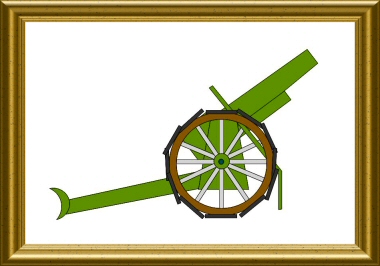|
|
|
|
|
|
|
 Germany
|
15cm Schnell Lade Kanone L/45 in Räder Lafette |
 Heavy artillery
|
|
|
Contributor :
|
Location :
Canada
Woodbridge, Ontario
Woodbridge Tower Memorial
Coordinates :
Lat : 43.78220 / Long : -79.59490
|
General comments on this surviving gun :
Identical items in the same location :
1
Items covered by this file :
1
|
|

|

|

|
The Woodbridge memorial presents a unique collection of two 15cm guns, ons in L/40 and the other in L/45
|
The massive circumstance carriage
|
Zoom on the breech and the recoil recuperating systems. Unreadable markings
|
|
|
Historic and technical information
|
|
Denomination :
15cm sK L/45 i.R.L.
|
Origin :
 (
Krupp)
(
Krupp)
|
|
Historic context :
Many years before the war outbreak, Germany understood the importance of long range mobile heavy guns needed to reach the central core of the fortresses while staying safe from the couter-battery fire. After some debates on the caliber, the choice is oriented towards the 13cm K 09 long guns, with a remarkable 14500 m (then 16500 m) range, that are present in August 1914 in invasion forces.
The little quantities of available 13 cm guns and the will to increase the destructive power of the projectiles makes the German Army ask for the development of 15cm long range guns, as early as September 1914. The need for such weapons is even found bigger when the war quickly turns into a position war, These studies will give birth in 1916 to the fantastic 15m K 16 guns of Krupp and RheinMetall.
Meanwhile, during the design time of these new weapons, the only temporary solution consists in using barrels designed for the KriegsMarine. This is how the '15 cm SK L/40 i.R.L.' ('SK' = Schnellade-kanone = rapid loading gun; 'i.R.L.' = in Räderlafette = on wheeled carriage) is proposed by Krupp on the basis of 15 cm Navy guns using a recoil recuperation system (although not strong enough to absorb the whole recoil energy), mounted on a circumstance carriage for land use. The stability of this heavy gun and the recoil efforts not totally compensated made necessary the use of a heavy specific firing platform, allowing also the horizontal aiming thanks to a pivot link.
The very long tube allowed to reach impressive ranges (18700 m ), at the detriment of an almost prohibitive weight (the gun + platform total weight being around 18 tons) that handicaped the gun mobility. The transportation had to be performed in 3 heavy separate loads. An even longer Navy tube has been associated the same way on a similar circumstance carriage, forming the '15 cm SK L/45 i.R.L.', for an even longer range (22675 m) but also for an even higher weight.
Appeared as early as the beginning of 1915 and produced up to a total quantity of 150, these monsters were gradually replaced from the beginning of 1917 by the new 15cm guns lighter and mobile, and with a longer range (the '15 cm K 16' Krupp and Rheinmetall shooting targets up to almost 23 km…) or by the railway heavy artillery. Some of these guns were reconverted into coastal defence weapons.
|
Technical data :
- Complete description : 15cm L/45 quick loading gun on wheeled craddle
- Design year : 1915
- Calibre : 149.10 mm
- Weight in firing position : 11820 kg, plus 7450 kg for the platform (version L/40)
- Weight for transportation : in three separated loads
- Tube length in calibres : 45.00 - total tube length
- Grooves : 44
- Projectile weight : 44.2 kg
- Initial speed : 840 m/s
- Fire rate :
- Range : 22675 m
- Elevation range : -8 to +32 degrees (version L/40)
- Direction range : 60 degrees total range when rotated on the pivot platform
|
Sources
|
-
German Artillery of World War One Herbert Jager Crowood 2001
-
Das Geraet der Schweren Artillerie vor, in und nach der Weltkrieg Herman Schirmer Bernard und Graefe, Berlin 1937
|
|